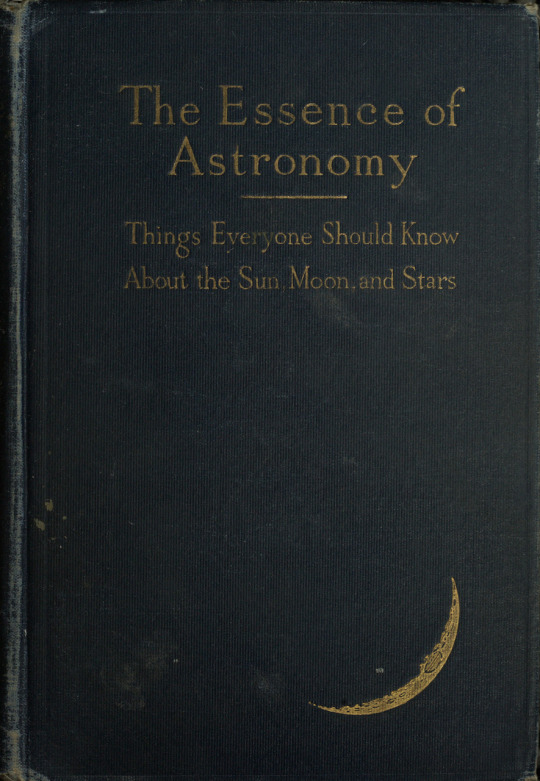Space basics and news for the ones who can only wish they lived with their head in the universe Teen | Aspiring Astronomer | Friendly Neighbourhood Blogger
Don't wanna be here? Send us removal request.
Text
you know you’ve reached peak nerd when the physics equations fit together and align so well that your brain immediately goes “this is sexy”
#it's not even a bad thing#being a nerd is my identity#teehee#dark academia#physics#this was about proton proton chains y'all
14 notes
·
View notes
Text
Hey remember when US and Russia was all like “We’re the best!!! We’ve won the space race!!!!” But India sent a kick-ass space probe to Mars and the whole mission was fuel efficient, costed less and a roaring success in the first try and then they were like “…..wait no that can’t be true” and still have the audacity to call us “underdeveloped” or only view us as a ‘third world country’? :)
For anyone who needs more info, the probe was called Mangalyaan (which literally means space probe vehicle) or Mars Orbiter Mission (MOM) and you can also get more information here and here
239K notes
·
View notes
Text
THROUGH A RAPIST’S EYES” (PLS TAKE TIME TO READ THIS. It may save a life, It may save your life.)
An Article from Neena Susan Thomas
“Through a rapist’s eyes. A group of rapists and date rapists in prison were interview…ed on what they look for in a potential victim and here are some interesting facts:
1] The first thing men look for in a potential victim is hairstyle. They are most likely to go after a woman with a ponytail, bun! , braid, or other hairstyle that can easily be grabbed. They are also likely to go after a woman with long hair. Women with short hair are not common targets.
2] The second thing men look for is clothing. They will look for women who’s clothing is easy to remove quickly. Many of them carry scissors around to cut clothing.
3] They also look for women using their cell phone, searching through their purse or doing other activities while walking because they are off guard and can be easily overpowered.
4] The number one place women are abducted from / attacked at is grocery store parking lots.
5] Number two is office parking lots/garages.
6] Number three is public restrooms.
7] The thing about these men is that they are looking to grab a woman and quickly move her to a second location where they don’t have to worry about getting caught.
8] If you put up any kind of a fight at all, they get discouraged because it only takes a minute or two for them to realize that going after you isn’t worth it because it will be time-consuming.
9] These men said they would not pick on women who have umbrellas,or other similar objects that can be used from a distance, in their hands.
10] Keys are not a deterrent because you have to get really close to the attacker to use them as a weapon. So, the idea is to convince these guys you’re not worth it.
POINTS THAT WE SHOULD REMEMBER:
1] If someone is following behind you on a street or in a garage or with you in an elevator or stairwell, look them in the face and ask them a question, like what time is it, or make general small talk: can’t believe it is so cold out here, we’re in for a bad winter. Now that you’ve seen their faces and could identify them in a line- up, you lose appeal as a target.
2] If someone is coming toward you, hold out your hands in front of you and yell Stop or Stay back! Most of the rapists this man talked to said they’d leave a woman alone if she yelled or showed that she would not be afraid to fight back. Again, they are looking for an EASY target.
3] If you carry pepper spray (this instructor was a huge advocate of it and carries it with him wherever he goes,) yelling I HAVE PEPPER SPRAY and holding it out will be a deterrent.
4] If someone grabs you, you can’t beat them with strength but you can do it by outsmarting them. If you are grabbed around the waist from behind, pinch the attacker either under the arm between the elbow and armpit or in the upper inner thigh – HARD. One woman in a class this guy taught told him she used the underarm pinch on a guy who was trying to date rape her and was so upset she broke through the skin and tore out muscle strands the guy needed stitches. Try pinching yourself in those places as hard as you can stand it; it really hurts.
5] After the initial hit, always go for the groin. I know from a particularly unfortunate experience that if you slap a guy’s parts it is extremely painful. You might think that you’ll anger the guy and make him want to hurt you more, but the thing these rapists told our instructor is that they want a woman who will not cause him a lot of trouble. Start causing trouble, and he’s out of there.
6] When the guy puts his hands up to you, grab his first two fingers and bend them back as far as possible with as much pressure pushing down on them as possible. The instructor did it to me without using much pressure, and I ended up on my knees and both knuckles cracked audibly.
7] Of course the things we always hear still apply. Always be aware of your surroundings, take someone with you if you can and if you see any odd behavior, don’t dismiss it, go with your instincts. You may feel little silly at the time, but you’d feel much worse if the guy really was trouble.
FINALLY, PLEASE REMEMBER THESE AS WELL ….
1. Tip from Tae Kwon Do: The elbow is the strongest point on your body. If you are close enough to use it, do it.
2. Learned this from a tourist guide to New Orleans : if a robber asks for your wallet and/or purse, DO NOT HAND IT TO HIM. Toss it away from you…. chances are that he is more interested in your wallet and/or purse than you and he will go for the wallet/purse. RUN LIKE MAD IN THE OTHER DIRECTION!
3. If you are ever thrown into the trunk of a car: Kick out the back tail lights and stick your arm out the hole and start waving like crazy. The driver won’t see you but everybody else will. This has saved lives.
4. Women have a tendency to get into their cars after shopping,eating, working, etc., and just sit (doing their checkbook, or making a list, etc. DON’T DO THIS! The predator will be watching you, and this is the perfect opportunity for him to get in on the passenger side,put a gun to your head, and tell you where to go. AS SOON AS YOU CLOSE the DOORS , LEAVE.
5. A few notes about getting into your car in a parking lot, or parking garage:
a. Be aware: look around your car as someone may be hiding at the passenger side , peek into your car, inside the passenger side floor, and in the back seat. ( DO THIS TOO BEFORE RIDING A TAXI CAB) .
b. If you are parked next to a big van, enter your car from the passenger door. Most serial killers attack their victims by pulling them into their vans while the women are attempting to get into their cars.
c. Look at the car parked on the driver’s side of your vehicle, and the passenger side. If a male is sitting alone in the seat nearest your car, you may want to walk back into the mall, or work, and get a guard/policeman to walk you back out. IT IS ALWAYS BETTER TO BE SAFE THAN SORRY. (And better paranoid than dead.)
6. ALWAYS take the elevator instead of the stairs. (Stairwells are horrible places to be alone and the perfect crime spot).
7. If the predator has a gun and you are not under his control, ALWAYS RUN! The predator will only hit you (a running target) 4 in 100 times; And even then, it most likely WILL NOT be a vital organ. RUN!
8. As women, we are always trying to be sympathetic: STOP IT! It may get you raped, or killed. Ted Bundy, the serial killer, was a good-looking, well educated man, who ALWAYS played on the sympathies of unsuspecting women. He walked with a cane, or a limp, and often asked “for help” into his vehicle or with his vehicle, which is when he abducted his next victim.
Send this to any woman you know that may need to be reminded that the world we live in has a lot of crazies in it and it’s better safe than sorry.
If u have compassion reblog this post. ‘Helping hands are better than Praying Lips’ – give us your helping hand.
REBLOG THIS AND LET EVERY GIRL KNOW AT LEAST PEOPLE WILL KNOW WHATS GOING ON IN THIS WORLD. So please reblog this….Your one reblog can Help to spread this information.
THIS COULD ACTUALLY SAVE A LIFE.”
1M notes
·
View notes
Text
In the notes of the “demented twitter activists saying fuck anne frank” post, I’m seeing a lot of people saying “Don’t they know Jews weren’t considered white in Nazi Germany?”
This is a well-intentioned attempt at accurately characterizing the situation, but we need to take a step back even further: “White” did not exist and did not matter in Nazi Germany. Hitler did not care who was or would be classified as “white” in the United States.
So much of the foolishness and harm of the “woke” mindset comes from attempting to force American categories of white vs. black (or more recently, white vs. an expanded “people of color” category) onto the entire planet.
Now, some people immersed in wokeness do seem to grasp this in the case of “people of color”, e.g. understanding that in the Middle East it’s meaningless to label yourself as a “person of color” when group identities are primarily defined by religion, language, and culture, not phenotype. But I have seen people take great offense and react with staggering disbelief at the idea that no, Europeans do not view themselves as “white” and it’s unhelpful and meaningless to force that label onto them. You know, reactions like “Wtf do you mean they’re not white? They’re all a bunch of mayos, stop trying to say they’re exempt from white privilege!” or whatever.
In fact, the brand of intersectionality and social justice ideology that’s emerged from American academia and activist circles, especially from the Obama era onwards, is overtly and almost chauvinistically US-centric, and all the “good, progressive-minded” liberals who buy into it are almost entirely unaware of this, even as they try to hammer the whole world into it - call it the “intersectional gaze”.
340 notes
·
View notes
Text
HAPPY BIRTHDAY TESS!!!!
One Year Into Our Planet-Hunting TESS Mission
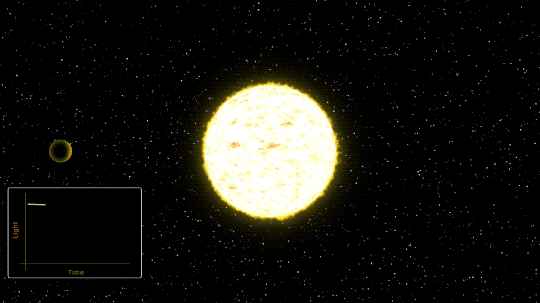
Our Transiting Exoplanet Survey Satellite (TESS), launched last year on April 18, is completing a year in space, surveying the skies to find the closest, most exciting planets outside our solar system for further study. Worlds that TESS is hunting for include super-Earths, rocky planets, gas giants, and maybe even some Earth-sized planets — and much, much more! TESS is scanning the whole sky one section at a time, monitoring the brightness of stars for periodic dips caused by planets transiting (that is, passing in front of) those stars. So far, TESS has found 548 candidates and 10 confirmed exoplanets.
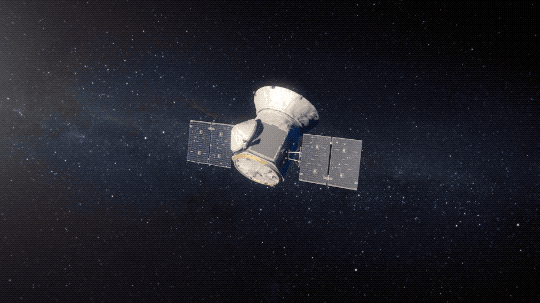
Since its launch, TESS has orbited Earth a total of 28 times. TESS has a unique elliptical orbit that circuits around Earth twice every time the Moon orbits. This allows TESS’s cameras to monitor each patch of sky continuously for nearly a month at a time. To get into this special orbit, TESS made a series of loops culminating in a lunar gravitational assist, which gave it the final push it needed.
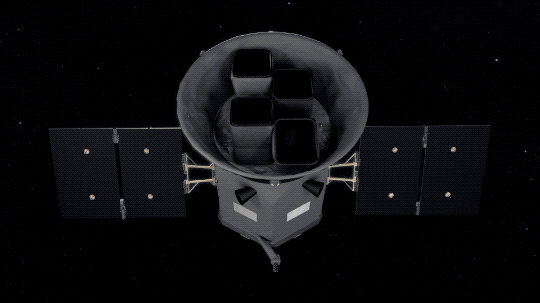
Did you know that TESS has some serious mileage? The spacecraft has traveled about 20 million miles so far, which works out to an average of about 2,200 miles per hour. That’s faster than any roadrunner we’ve ever seen! This would be four times faster than an average jet. You’d get to your destination in no time!
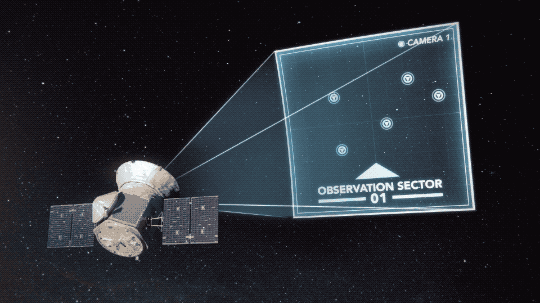
TESS downloads data during its closest approach to Earth about every two weeks. So far, it has returned 12,000 gigabytes of data. That’s as if you streamed about 3,000 movies on Netflix. Get the popcorn ready! If you total all the pixels from every image taken using all four of the TESS cameras — which is about 600 full-frame images per orbit, you’d get about 805 billion pixels. This is like half a million iPhone screens put together!

When the Kepler Space Telescope reached the end of its mission, it passed the planet-finding torch to TESS. Where Kepler’s view was deep — looking for planets as far away as 3,000 light-years — TESS’s view is wide, surveying nearly the entire sky over two years. Each sector TESS views is 20 times larger than Kepler’s field of view.

TESS will continue to survey the sky and is expected to find about 20,000 exoplanets in the two years it’ll take to complete a scan of nearly the entire sky. Before TESS, several thousand candidate exoplanets were found, and more than 3,000 of these were confirmed. Some of these exoplanets are expected to range from small, rocky worlds to giant planets, showcasing the diversity of planets in the galaxy.
The TESS mission is led by MIT and came together with the help of many different partners. You can keep up with the latest from the TESS mission by following mission updates and keep track of the number of candidates and confirmed exoplanets.
Make sure to follow us on Tumblr for your regular dose of space: http://nasa.tumblr.com.
2K notes
·
View notes
Photo


SCIENTISTS FIND EVIDENCE MERCURY HAS A SOLID INNER CORE
Scientists have long known that Earth and Mercury have metallic cores. Like Earth, Mercury’s outer core is composed of liquid metal, but there have only been hints that Mercury’s innermost core is solid. Now, in a new study, scientists report evidence that Mercury’s inner core is indeed solid and that it is very nearly the same size as Earth’s solid inner core.
Some scientists compare Mercury to a cannonball because its metal core fills nearly 85 percent of the volume of the planet. This large core – huge compared to the other rocky planets in our solar system – has long been one of the most intriguing mysteries about Mercury. Scientists had also wondered whether Mercury might have a solid inner core.
The findings of Mercury’s solid inner core, published in AGU’s journal Geophysical Research Letters, help scientists better understand Mercury but also offer clues about how the solar system formed and how rocky planets change over time.
“Mercury’s interior is still active, due to the molten core that powers the planet’s weak magnetic field, relative to Earth’s,” said Antonio Genova, an assistant professor at Sapienza University of Rome who led the research while at NASA Goddard Space Flight Center in Greenbelt, Maryland. “Mercury’s interior has cooled more rapidly than our planet’s. Mercury may help us predict how Earth’s magnetic field will change as the core cools.”
To figure out what Mercury’s core is made of, Genova and his colleagues had to get, figuratively, closer. The team used several observations from NASA’s MESSENGER mission to probe Mercury’s interior. The researchers looked, most importantly, at the planet’s spin and gravity.
The MESSENGER spacecraft entered orbit around Mercury in March 2011 and spent four years observing this nearest planet to our Sun until it was deliberately brought down to the planet’s surface in April 2015.
Scientists used radio observations from MESSENGER to determine Mercury’s gravitational anomalies (areas of local increases or decreases in mass) and the location of its rotational pole, which allowed them to understand the orientation of the planet.
Each planet spins on an axis, also known as the pole. Mercury spins much more slowly than Earth, with its day lasting about 58 Earth days. Scientists often use tiny variations in the way an object spins to reveal clues about its internal structure. In 2007, radar observations made from Earth revealed small shifts in Mercury’s spin, called librations, that proved some of the planet’s core must be liquid-molten metal. But observations of the spin rate alone were not sufficient to give a clear measurement of what the inner core was like. Could there be a solid core lurking underneath, scientists wondered?
Gravity can help answer that question. “Gravity is a powerful tool to look at the deep interior of a planet because it depends on the planet’s density structure,” said Sander Goossens, a researcher at NASA Goddard and co-author of the new study.
As MESSENGER orbited Mercury over the course of its mission and got closer and closer to the surface, scientists recorded how the spacecraft accelerated under the influence of the planet’s gravity. The density structure of a planet can create subtle changes in a spacecraft’s orbit. In the later parts of the mission, MESSENGER flew about 120 miles above the surface, and less than 65 miles during its last year. The final low-altitude orbits provided the best data yet and allowed for Genova and his team to make the most accurate measurements about the internal structure of Mercury yet taken.
Genova and his team put data from MESSENGER into a sophisticated computer program that allowed them to adjust parameters and figure out what the interior composition of Mercury must be like to match the way it spins and the way the spacecraft accelerated around it. The results showed that for the best match, Mercury must have a large, solid inner core. They estimated that the solid, iron core is about 1,260 miles (2,000 kilometers) wide and makes up about half of Mercury’s entire core (about 2,440 miles, or nearly 4,000 kilometers, wide). In contrast, Earth’s solid core is about 1,500 miles (2,400 kilometers) across, taking up a little more than a third of this planet’s entire core.
“We had to pull together information from many fields: geodesy, geochemistry, orbital mechanics and gravity to find out what Mercury’s internal structure must be,” said Erwan Mazarico, a planetary scientist at NASA Goddard and co-author of the new study.
The fact that scientists needed to get close to Mercury to find out more about its interior highlights the power of sending spacecraft to other worlds, according to the researchers. Such accurate measurements of Mercury’s spin and gravity were simply not possible to make from Earth. New discoveries about Mercury are practically guaranteed to be waiting in MESSENGER’s archives, with each discovery about our local planetary neighborhood giving us a better understanding of what lies beyond.
“Every new bit of information about our solar system helps us understand the larger universe,” Genova said.
TOP IMAGE….An illustration of Mercury’s interior based on new research that shows the planet has a solid inner core. Credit: Antonio Genova.
LOWER IMAGE….An artist’s concept of the interiors of Earth, Mars and Earth’s moon. New research shows Mercury has a solid inner core like Earth does. Credit: NASA/JPL-Caltech.
8 notes
·
View notes
Text
Pleiades (M45) The seven Sisters

In the northern sky, there is a small group of stars which can often appear as a smudge in the sky. In a dark area, you’ll spot a number of stars, on average around 7. This has led to the name Seven Sisters, however there are indeed over 1000 stars, tightly packed into a cluster.
The beautiful blue colour is noticeable through binoculars, and is the result of the largest blue giant stars, however the cluster contains many stars of different sizes and colours.
The cluster is around 450 light years from earth, making it one of the closest and most visible clusters in our night sky.

To find it, locate Orion’s belt (easy to find during the winter months) and follow upwards to a bright red star Aldebaran, and then just beyond this you’ll be able to see the smudge with your naked eye even in large cities.
The Pleiades are one of the wonders of our sky, if you’ve never seen them before, and especially if you have a pair of binoculars handy, do take a look, trust me, you’ll not regret what you’ll see.

32 notes
·
View notes
Link
3 notes
·
View notes
Photo

In celebration of the 29th anniversary of the launch of NASA’s Hubble Space Telescope, astronomers captured this festive, colorful look at the tentacled Southern Crab Nebula.
The nebula, officially known as Hen 2-104, is located several thousand light-years from Earth in the southern hemisphere constellation of Centaurus.
Credit: NASA, ESA, and STScI
3K notes
·
View notes
Text
This Image Will Suck the Negativity out of your Life!
April 10, 2019, was a momentous day in astrophotography and for astronomers in general. It was on this day, as most of you will be aware (maybe because of the tonnes of memes surrounding it :P), that Dr Katherine Bouman’s algorithm to detect and photograph black holes was successful in showing us this famous picture of a massive devil at the center of galaxy Messier 87.

Yes, it is pretty blurry, and yes, it doesn’t LOOK too significant, but this remains the first and currently the only photographic evidence we have of black holes. We can clearly see the event horizon surrounding the actual black hole, as well as faint wisps of the accretion disk swirling around the horizon.
The method used for capturing this picture was ingenious. Due to its large wavelength, capturing a black hole through a normal radio telescope would require the telescope to stretch over 5000 kilometres, which is obviously pretty much impossible to conceive. So, what the team of 200 astronomers did instead is, they set up a network of ten radio telescopes at different points on the earth (Mexico, Chile, Antarctica, Spain, and Hawaii), which exploited the rotation of the earth and used precisely timed recordings of radio waves to act as a single giant telescope which can discern objects in space down to 15-20 micro-arcseconds; that would be like trying to spot a golf ball on the Moon!
As the technology becomes more and more sophisticated with further funding in the project that is now gaining even more traction, Shep Doeleman, the Harvard physicist who led the team, expects to release a video of the same black hole soon. The significance of this move for space-time navigation is magnificent.
Don’t mind if I reblog a few black hole memes now :P.
Source
Source
More info about the working of the telescope
One more post coming up!
-Riri
2 notes
·
View notes
Text
We Found the Universe’s First Type of Molecule
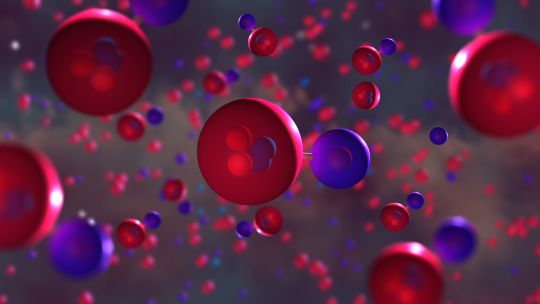
For decades, astronomers searched the cosmos for what is thought to be the first kind of molecule to have formed after the Big Bang. Now, it has finally been found. The molecule is called helium hydride. It’s made of a combination of hydrogen and helium. Astronomers think the molecule appeared more than 13 billion years ago and was the beginning step in the evolution of the universe. Only a few kinds of atoms existed when the universe was very young. Over time, the universe transformed from a primordial soup of simple molecules to the complex place it is today — filled with a seemingly infinite number of planets, stars and galaxies. Using SOFIA, the world’s largest airborne observatory, scientists observed newly formed helium hydride in a planetary nebula 3,000 light-years away. It was the first ever detection of the molecule in the modern universe. Learn more about the discovery:
Helium hydride is created when hydrogen and helium combine.

Since the 1970s, scientists thought planetary nebula NGC 7027—a giant cloud of gas and dust in the constellation Cygnus—had the right environment for helium hydride to exist.
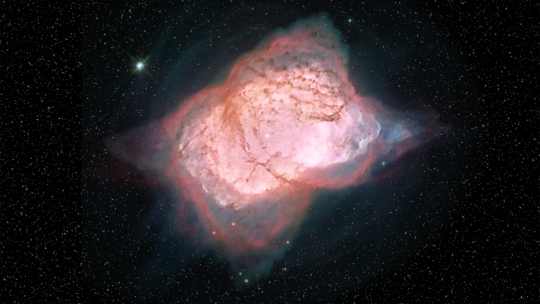
But space telescopes could not pick out its chemical signal from a medley of molecules.
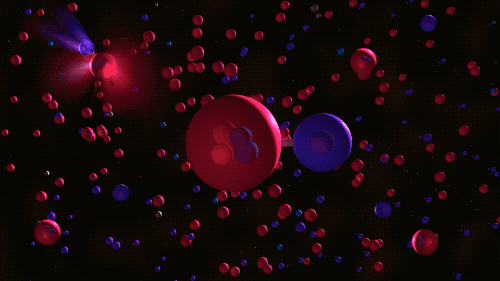
Enter SOFIA, the world’s largest flying observatory!

By pointing the aircraft’s 106-inch telescope at the planetary nebula and using a tool that works like a radio receiver to tune in to the “frequency” of helium hydride, similar to tuning a radio to a favorite station…

…the molecule’s chemical signal came through loud and clear, bringing a decades-long search to a happy end.

The discovery serves as proof that helium hydride can, in fact, exist in space. This confirms a key part of our basic understanding of the chemistry of the early universe, and how it evolved into today’s complexity. SOFIA is a modified Boeing 747SP aircraft that allows astronomers to study the solar system and beyond in ways that are not possible with ground-based telescopes. Find out more about the mission at www.nasa.gov/SOFIA
Make sure to follow us on Tumblr for your regular dose of space: http://nasa.tumblr.com
10K notes
·
View notes
Photo
Such hard work deserves to reach more people

ever wanted to do some stuff? like, different stuff? tired of having to scroll through your huge ref tag? LOOK NO FURTHER!! Have a masterpost of LITERALLY EVERYTHING which took me 5 hours to make so reblog it
Art:
Painting tutorial
Female/male arms
Kneeling + Sitting ref
Dragon head view tutorial
SAI brushes 86786
Drawing expressions
Sai Brushes 1
NGE colour palette 1
100+ colour palletes
Avoiding same face
Face contours/highlighting
free art MyPaint
Body anatomy help 1
How to shift images using blur in PS
Drawing clothe folding
How to draw ice
Colour palette 1
Colour palette 2
SAI brush settings 2
SAI/PS pixel brushes
Warm/Cool gray
Flower crown tutorial
Skin colour palette
Pink colour sheet
How to draw butts&thighs
The male torso
Drawing glowing stuff in SAI
Drawing horse/animal legs on humans
Drawing clouds
Muscular male with bow stock photos
Pastel colours
Drawing grass fields in SAI
Expressions&Legs
All about the human body
20+ colour palettes
Colour conversion
Kissing ref
Creature design
Colour meanings
Creating expression
Tutorial masterpost (100+)
Lineart
Canine
How to colour
Pose studies
Feline comparisons
How to draw penis
Leaf pressing
100+ anatomy references
How to draw folds
SAI brushes 3
Sitting poses
Colour palette 4
Cloud painting
How to draw 3D rooms
Colour info
Colouring ref
Hair tutorial
Clothing ref
Bodies and poses
SAI brushes 5
Colour scheme designer
Folding ref
Heads&Angles
Paint tool SAI masterpost
Drawing ref masterpost (10+)
Hair+Fur
How to draw faces
SAI brushes 4
Anatomy of mutant humans
What should I draw?
Free art software
pastel colour ref
Mass art ref
Soft SAI brushes
ways to draw stuff
SAI brush settings
baseball cap ref
Penis ref
Drawing human wings
Cool free art software
Huge art ref
Colour blender
2 SAI brushes
Photoshop for free
Writing:
Inspiration 1
Instead of ‘whispered’
Music for writing fight scenes
Writing fantasy
Emotions vocab sheet
How to reveal character
Writers block resource
Writing a death scene
BIO help
Music to help you write
Writing prompt generators
Got writers block?
How to torture a character
Degrees of emotion
ULTIMATE writing ref, 500+
Character names
Body language
25 days of fic
HOW TO DRAW ANYTHING
Writing people of colour
nanowrimo start kit
character flaws
General:
Becoming an adult masterpost
cute OTP things
Resource masterpost
For bored people
Anime + Manga recs
how to make a blanket nest
Getting an apartment
what should i read next?
If you’re bored
Delete tourists from photos
Cute pet nicknames
Family tree explained
Pulling an all nighter
masterpost of themes/pixels/emoticons
List of demon names
Demons & Deities in the bible
Moss graffiti
Types of attraction
Trampoline = outside bed
College textbooks
God masterpost
Creepypasta
OTP necklaces
Super silky summer legs
Plastic keychains
How to write cover letters
make music on itunes sound great
Documentarys
Classic lit
Makeup:
Black/gold ref 1
Cosplay eye makeup
Halloween eye gore makeup (tw eye gore)
Rotting skin halloween makeup
Eyeliner ref
bloody halloween nails
Gender:
Getting gender-neutral pronouns on facebook
Backgrounds:
Pokemon mystery dungeons iphone
Ghosty backgrounds
Themes/pixel/backgrounds
Clothing:
1000+ everything clothing ref
Awesome jackets
Cheer up/Be happy
If you’re having a bad night
Movies to watch when you’re down
Confidence
Sowing:
8ft giant squid pattern
Food:
Cheeseburger cupcakes
Deep-dish cookie for one
Exercise:
Burning stomach fat
Games:
PokéRadar guide
Play pokémon games online
Pkmn Shiny hunting guide
Animal crossing new leaf face/hair guide
Free RPG games
Mental health:
Talking about your mental health
460K notes
·
View notes
Text
Constellation of the Week (more like Month): Orion


So I thought I might want to delay talking about this one to avoid becoming a cliche, but one can only hold off from their greatest desires for so long: so here it is, our SECOND constellation of the blog, the Greek hunter, Orion!
Orion is not only one of the most iconic constellations visible in the Northern Hemisphere during the winter (summer in the Southern Hemisphere), it is highly conspicuous and houses some of the more important stars visible in the night sky. Prominent stars include Betelguese (which I will talk about in a future post) or Alpha Orionis, Rigel or Beta Orionis and Bellatrix (Potterheads out there, I hear you). The twenty-eighth largest constellation out of the IAU 88, it is most easily cognizable due to its “belt” of three stars arranged in a diagonal line with a quadrilateral bottom and pentagonal torso through which extend the archer’s bow and crude mace held over his head. Even a relatively amateurish and untrained eye can easily make it out.
The myth of Orion stems from Greek mythology, as do most of the constellations. Orion was a skilled hunter with a moral code, which attracted Artemis, the goddess of the hunt and chastity, to his company. Her protective brother, Apollo, caught wind of their increasingly close companionship and in order to safeguard his sister’s oath of abstinence, he tricked her through boasts and challenges into shooting at her own friend’s skull, killing him instantly. Disturbed by her reckless action, she appealed to their father, Zeus, who gave in and immortalized Orion in the form of a constellation. Other variants of the myth say that the Mother Goddess, Gaia, sent a huge scorpion to end his life, which now accompanies Orion in the heavens as the constellation of Scorpio.
An interesting story and easy observation are what make this constellation a fan-favourite and, as I said before, a cliche.
Anyways, I wish I didn’t have to go to school tomorrow, but I can’t miss a day this week because I plan to bunk on Friday anyways. Oh well.
My next post should be either about neutrinos or a surface look at black holes. Until then, toodles!
-Riri
#space#astronomy#constellations#stars#greece#greek mythology#orion#artemis#apollo#nasa#start up#month
23 notes
·
View notes
Photo

A new moon for Neptune
Hippocamp, a previously undetected moon of Neptune, has a peculiar location and a tiny size relative to the planet’s other inner moons, which suggests a violent history for the region within 100,000 kilometres of the planet.
By Anne J. Verbiscer
In 1989, the NASA spacecraft Voyager 2 detected six moons of Neptune that are interior to the orbit of the planet’s largest moon, Triton1. In a paper in Nature, Showalter et al.2 report the discovery of a seventh inner moon, Hippocamp. Originally designated as S/2004 N 1 and Neptune XIV, this moon was found in images taken by NASA’s Hubble Space Telescope in 2004–05 and 2009, and then confirmed in further images captured in 2016. Hippocamp is only 34 kilometres wide, which makes it diminutive compared with its larger siblings, and it orbits Neptune just inside the orbit of Proteus — the planet’s second largest moon.
Continue Reading
111 notes
·
View notes
Text
You Know Nothing about Stars? Neutron my Watch!
*forgive me followers for I have sinned*

Okay so today we are going to be discussing an extremely interesting category of celestial bodies: NEUTRON STARS! When I say they are interesting, I mean that no matter how much I read about them, I keep thinking I want to learn more about them because frankly I don’t know much about them but I used to love them when I was younger. Plus, they are remotely tied to black holes, another subject of intense curiosity for anyone.
Neutron stars are a kind of stars formed when stars of ten to thirty solar masses explode in a supernova. They are extremely massive (average 1.4 solar masses) yet relatively tiny (average diameter of 20-30 km) remnants of such a star’s core after gravitational collapse. By gravitational collapse, one means that the pull of gravity in the core is so strong due to the fusion of heavier elements as the star dies, that the protons and the electrons fuse together to form neutrons. Hence, the name.
A neutron star is the densest object known to exist in a non-hypothetical scenario. To put this into perspective, Earth's magnetic field is around 1 gauss, and the sun's is around a few hundred gauss, according to astrophysicist Paul Sutter. However, a neutron star has a trillion-gauss magnetic field.

An interesting effect of neutron stars is the formation of bodies known as pulsars. Various stars eject atoms into the void of space through coronal mass ejections, much like the sun, creating a phenomenon known as stellar wind. This stellar wind gets caught up in the magnetic field of a neutron star and get catapulted back into space at regular intervals, when the star is heated, in the form of X-rays. Such X-ray emitting neutron stars are called pulsars; exposure to one can cause instant death and other radioactivity-related diseases.
A lesser-known event in the embroidery of the quilt that is the universe is something known as a kilonova. This occurs when two neutron stars form a binary star system, and due to their intense gravity, move a little bit closer to each other with each orbit and finally end up colliding with each other. Gravitational waves produced in such an event used to be just a theoretical concept, predicted by Albert Einstein’s Theory of Relativity, till 2017, when researchers finally observed such ‘ripples’ in the ‘fabric’ of space-time, as well as the formation of heavy elements in the neutron stars.
More information about the discovery of the ripples in space-time
More interesting in-depth information
Since my exams are over, I would probably expect myself to post more, but tenth grade is a huge deal in my country so maybe not...
Watch out for my next post on the best topic of all, black holes!
-Riri
2 notes
·
View notes
